| Srl | Item |
| 1 |
ID:
170721
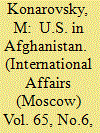

|
|
|
| 2 |
ID:
092465


|
|
|
|
|
| Publication |
2009.
|
| Summary/Abstract |
The use of force in international relations by the West is increasingly witnessing a greater reliance on Special Forces. This trend has profound implications for state action because Special Forces represent a very different kind of soldier and they possess the inherent ability to transgress traditional boundaries in peace and war. The development and participation of UK Special Forces in the Global War on Terror provides a microcosm of the positive and negative dimensions of using secret military units as the force of choice against insurgents and terrorists in Afghanistan, Iraq and indeed on the streets of London.
|
|
|
|
|
|
|
|
|
|
|
|
|
|
|
|
| 3 |
ID:
102352
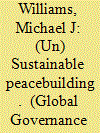

|
|
|
|
|
| Publication |
2011.
|
| Summary/Abstract |
Since the collapse of the Soviet Union, NATO has progressively adapted itself
to the new strategic environment. This has meant a shift from a defensive
posture to a more proactive risk management strategy. A key
component of this mandate is contributions to international peacemaking
and peacebuilding operations. In both the Balkans and Afghanistan, NATO
has worked to utilize its military assets to create and maintain peace so
that civilian organizations can administer aid, development programs, and
good governance projects. These multifaceted operations, however, are
complex and rely on well-structured relationships between the different
civilian-led international organizations on the ground and NATO. Sadly, as
the case of Afghanistan illustrates, these organizations have proved woefully
inadequate in terms of providing sustainable peacebuilding. The hypothesis
is that international organizations do not play well on the ground
in conflict or postconflict environments because they were meant to manage
a balance of power, rather than an absence of power. These organizations
are more worried about their bureaucratic turf than they are
sustainable outcomes.
|
|
|
|
|
|
|
|
|
|
|
|
|
|
|
|
| 4 |
ID:
144333
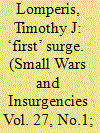

|
|
|
|
|
| Summary/Abstract |
In a military intervention, do surges work? I compare the failed ‘surge’ in Vietnam, the repulse of the Easter Invasion in 1972, as a means of assessing the more ambiguous surges in Iraq and Afghanistan. I identify four features of a surge for this analysis: the military dimensions and strategy of the surging forces, the military capabilities of the host forces, the political vitality and will of the host country, and the political commitment in the domestic politics of the intervener. I find that the last feature is the most critical; and, in all three surges, the American political commitment was lacking.
|
|
|
|
|
|
|
|
|
|
|
|
|
|
|
|
| 5 |
ID:
110975
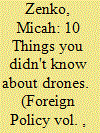

|
|
|
|
|
| Publication |
2012.
|
| Summary/Abstract |
In 1998, U.S. President Bill Clinton's administration shut down an operation to kill the al Qaeda leader in Afghanistan with cruise missiles, given collateral damage estimates of 300 casualties and only 50 percent confidence in the intelligence. As the 9/11 Commission noted, "After this episode Pentagon planners intensified efforts to find a more precise alternative." In 2000 and 2001, the U.S. Air Force struggled to reconfigure a Hellfire anti-tank missile to fit onto a Predator surveillance drone. Meeting one week before the 9/11 attacks, the National Security Council agreed that the armed Predator was not ready to be operationally deployed. The first known killing by armed drones occurred in November 2001, when a Predator targeted Mohammed Atef, a top al Qaeda military commander, in Afghanistan.
|
|
|
|
|
|
|
|
|
|
|
|
|
|
|
|
| 6 |
ID:
022939
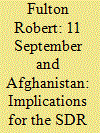

|
|
|
|
|
| Publication |
Oct 2002.
|
| Description |
66-71
|
|
|
|
|
|
|
|
|
|
|
|
|
|
|
|
| 7 |
ID:
185538
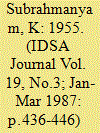

|
|
|
| 8 |
ID:
135583
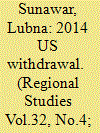

|
|
|
|
|
| Summary/Abstract |
The deployment of international troops in Afghanistan led by the US in 2001 brought new challenges for Pakistan to deal with. With American troops based in Afghanistan’s side of the border, the question of where the border was and Pakistan’s responsibilities for maintaining peace, law and order in its own territories acquired international attention. Militants were allegedly hiding on both sides of the border and were entering Pakistan through this porous border.
|
|
|
|
|
|
|
|
|
|
|
|
|
|
|
|
| 9 |
ID:
096798
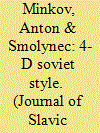

|
|
|
|
|
| Publication |
2010.
|
| Summary/Abstract |
The authors' objective is to inform the current NATO-ISAF mission in Afghanistan by examining the Soviet experience from a novel point of view; that is, to challenge the established opinion that the Soviet troops were defeated at the hands of the Afghan mujahidin and that their regime stabilization efforts were completely ineffective. Their focus extends beyond the military operations to tackle the issues related to Soviet state-building and social and economic development efforts, as well as disengagement strategies. The overall study the authors have undertaken highlights the fundamental structural factors in Afghanistan that make the Soviet experience in state-building relevant to the current reconstruction efforts in that country.
|
|
|
|
|
|
|
|
|
|
|
|
|
|
|
|
| 10 |
ID:
099108
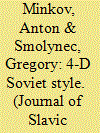

|
|
|
|
|
| Publication |
2010.
|
| Summary/Abstract |
Part two of the authors' study of the Soviet involvement in Afghnistan deals with social development as one of the elements of the overall Soviet state-building strategy. The authors conclude that Soviet social development policies, the effects of Soviet inspired nationalities policy, and the heavy-handed response to the opponents of the Peoples Democratic Party of Afghanistan (PDPA) alienated much of the population. The government in Kabul was able to attract some support primarily among the urban and the more educated stratum of the society, but, on the whole, remained isolated from the rural masses. The inability to engage a significant number of people in the state building process seriously undermined the Sovietization strategy. Soviet efforts to raise literacy levels among Afghans, and to enfranchise Afghan women could be qualified as relatively, if ephemerally, successful.
|
|
|
|
|
|
|
|
|
|
|
|
|
|
|
|
| 11 |
ID:
101055
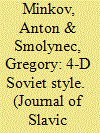

|
|
|
|
|
| Publication |
2010.
|
| Summary/Abstract |
4-D Soviet Style
Defence
Development
Afghanistan
Soviet Period
Economic Development
Russia
|
|
|
|
|
|
|
|
|
|
|
|
|
|
|
|
| 12 |
ID:
137493
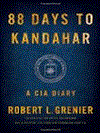

|
|
|
|
|
| Publication |
New York, Simon and Schuster, 2015.
|
| Description |
xix, 443p.Hbk.
|
| Standard Number |
9781476712079
|
|
|
|
|
|
|
|
|
|
|
|
Copies: C:1/I:0,R:0,Q:0
Circulation
| Accession# | Call# | Current Location | Status | Policy | Location |
| 058169 | 958.104/GRE 058169 | Main | On Shelf | General | |
|
|
|
|
| 13 |
ID:
077028
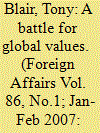

|
|
|
|
|
| Publication |
2007.
|
| Summary/Abstract |
The war on terrorism is not just about security or military tactics. It is a battle of values, and one that can only be won by the triumph of tolerance and liberty. Afghanistan and Iraq have been the necessary starting points of this battle. Success there, however, must be coupled with a bolder, more consistent, and more thorough application of global values, with Washington leading the way.
|
|
|
|
|
|
|
|
|
|
|
|
|
|
|
|
| 14 |
ID:
089984
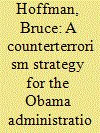

|
|
|
|
|
| Publication |
2009.
|
| Summary/Abstract |
This article assesses the scope and nature of the current terrorist threat to the United States and suggests a strategy to counter it. Al-Qaeda continues to pose the most serious terrorist threat to the U.S. today. If the September 11, 2001 attacks have taught us anything, it is that al-Qaeda is most dangerous when it has a sanctuary or safe haven from which to plan and plot attacks. Al-Qaeda has acquired such a sanctuary in Pakistan's Federal Administered Tribal Areas (FATA) and its North-West Frontier Province (NWFP) and surrounding environs. Accordingly, the highest priority for the new American presidential administration must be to refocus our-and our allies'-attention on Afghanistan and Pakistan, where al-Qaeda began to collapse after 2001, but has now re-grouped. This will entail understanding that al-Qaeda and its local militant jihadi allies cannot be defeated by military means alone. Success will require a dual strategy of systematically destroying and weakening enemy capabilities-that is, continuing to kill and capture al-Qaeda commanders and operatives-along with breaking the cycle of terrorist recruitment among radicalized "bunches of guys" as well as more effectively countering al-Qaeda's effective information operations. The U.S. thus requires a strategy that harnesses the overwhelming kinetic force of the American military as part of a comprehensive vision to transform other, non-kinetic instruments of national power in order to deal more effectively with irregular and unconventional threats. This article first discusses the scope and details of the terrorist threat today and then proposes a counterterrorism strategy for the new presidential administration. It focuses first on creating a micro approach to address the deteriorating situation in both Afghanistan and Pakistan. It then considers the requirements of a broader macro strategy to counter terrorism and insurgency.
|
|
|
|
|
|
|
|
|
|
|
|
|
|
|
|
| 15 |
ID:
118204
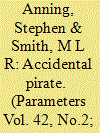

|
|
|
| 16 |
ID:
056367
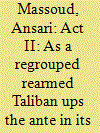

|
|
|
| 17 |
ID:
083016
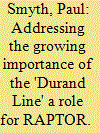

|
|
|
| 18 |
ID:
059006
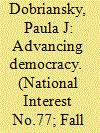

|
|
|
| 19 |
ID:
142340
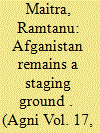

|
|
|
| 20 |
ID:
189072
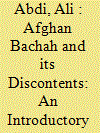

|
|
|
|
|
| Summary/Abstract |
Afghanistan is one of the few places where the category of bachah—the beardless young male—has maintained its aesthetic and erotic aspects in the public imagination. This article provides an introduction to the history of the various arrangements of man-bachah relationships in Afghanistan from the rise of the Afghan kingdom in the late eighteenth century. By looking at both primary and secondary sources, alongside ethnographic materials gathered during fieldwork in Afghanistan between 2016 and 2021, this article shows how the content and implications of the category of bachah have been in constant flux and intimately connected to wider social, political, and economic developments both inside the country and beyond.
|
|
|
|
|
|
|
|
|
|
|
|
|
|
|
|